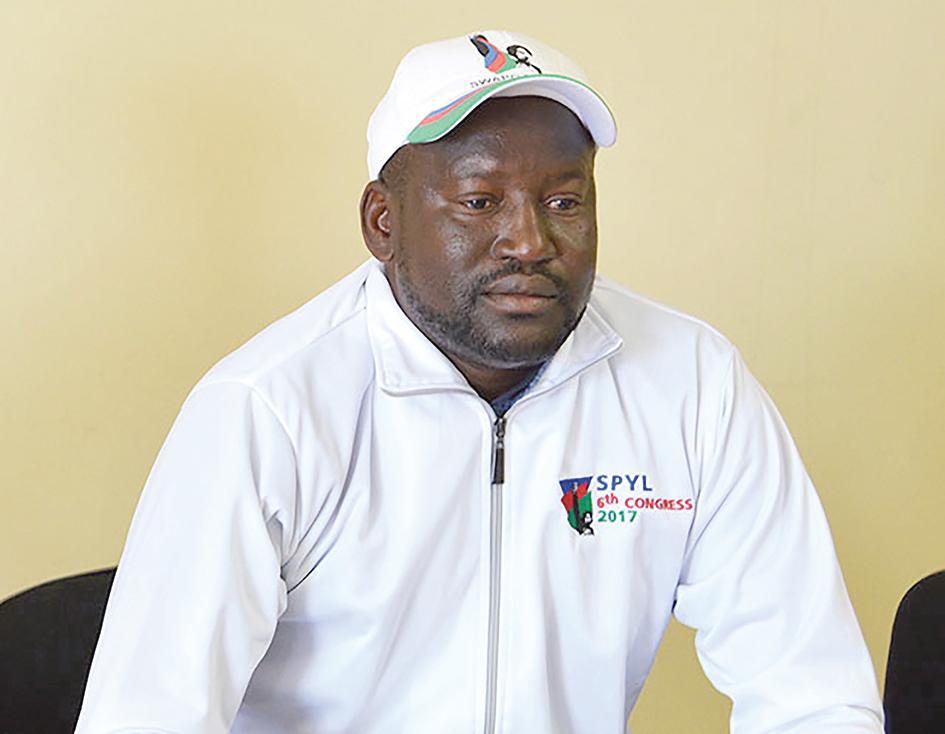MORE than 223 000 Namibians are jobless, with more than 108 000 of them actively searching for work.
Females struggle more to find work than males. Overall, fewer Namibians are economically active (either employed or unemployed) than in 2000 – down from 54 per cent to 47,9 per cent.This information is contained in two key labour reports presented to the National Assembly yesterday.The survey-based reports were initiated to guide Government in knowing more about the country’s labour sector.The reports note that among those who are employed, income disparity between the highest and lowest-earning Namibians is severely skewed with the majority earning between N$1 000 and N$5 000 a month.Only 0,1 per cent of employees earn a monthly salary of more than N$33 000 – with 77,6 per cent living in the Khomas Region.The Namibia Labour Force Survey 2004 puts the current rate of unemployment at 36,7 per cent.The highest unemployment rates are in the Omusati (64,6 per cent) and Ohangwena (64,2 per cent) regions.According to the Namibia Occupational Wages Survey of 2002, 48 per cent of the country depends on their wages for subsistence.The survey also indicates that 14,9 per cent of employees in various industries earn N$600 or less a month.”The extent to which this amount contributes to a living wage leaves a lot to be desired,” said the report.This finding is likely to intensify calls for the introduction of a minimum wage in all sectors of the economy in efforts to contribute to poverty reduction.More than 42 000 people were surveyed for the Occupational Wages Survey.Those working in the agriculture, wholesale, retail, public administration, defence and social security sectors were among the lowest paid workers surveyed.The Namibia Labour Force Survey found that most households in Namibia did not have diversified sources of income and 68 per cent of households in the country lacked a secondary source of income – a proportion that rises to 82 per cent for urban households.This is the third comprehensive labour force survey conducted in Namibia since Independence.The survey was conducted nationwide with a view to acquiring basic data for policymaking at national and regional levels as well as for different sectors.According to the latest labour force survey, more than 56,4 per cent of males are employed compared to only 40,7 per cent of females.Employment is higher in urban areas (66,5 per cent) compared to rural areas (34,7 per cent).The labour force participation rate tends to increase between the ages of 20 and 24 years to 48,6 per cent as young people enter the labour market.It peaks between the ages of 35-39 years (71,6 per cent) where most people are active in the job market and gradually declines at the age of 65 (seven per cent) as they leave the labour market because of retirement, family responsibilities and illness.Women tend to leave the labour market earlier than men, possibly because of family responsibilities.Since the last two labour force surveys were conducted in 1997 and 2000, the employment rate has increased in urban areas compared to rural areas.This could be attributed to rural-urban migration as people search for job opportunities.While in 1997 and 2000, the highest labour force participation rates were in Khomas Region, this has shifted to Erongo and Karas regions where the rates have exceeded 70 per cent.Overall, fewer Namibians are economically active (either employed or unemployed) than in 2000 – down from 54 per cent to 47,9 per cent.This information is contained in two key labour reports presented to the National Assembly yesterday.The survey-based reports were initiated to guide Government in knowing more about the country’s labour sector.The reports note that among those who are employed, income disparity between the highest and lowest-earning Namibians is severely skewed with the majority earning between N$1 000 and N$5 000 a month.Only 0,1 per cent of employees earn a monthly salary of more than N$33 000 – with 77,6 per cent living in the Khomas Region. The Namibia Labour Force Survey 2004 puts the current rate of unemployment at 36,7 per cent.The highest unemployment rates are in the Omusati (64,6 per cent) and Ohangwena (64,2 per cent) regions.According to the Namibia Occupational Wages Survey of 2002, 48 per cent of the country depends on their wages for subsistence.The survey also indicates that 14,9 per cent of employees in various industries earn N$600 or less a month.”The extent to which this amount contributes to a living wage leaves a lot to be desired,” said the report.This finding is likely to intensify calls for the introduction of a minimum wage in all sectors of the economy in efforts to contribute to poverty reduction.More than 42 000 people were surveyed for the Occupational Wages Survey.Those working in the agriculture, wholesale, retail, public administration, defence and social security sectors were among the lowest paid workers surveyed.The Namibia Labour Force Survey found that most households in Namibia did not have diversified sources of income and 68 per cent of households in the country lacked a secondary source of income – a proportion that rises to 82 per cent for urban households.This is the third comprehensive labour force survey conducted in Namibia since Independence.The survey was conducted nationwide with a view to acquiring basic data for policymaking at national and regional levels as well as for different sectors.According to the latest labour force survey, more than 56,4 per cent of males are employed compared to only 40,7 per cent of females.Employment is higher in urban areas (66,5 per cent) compared to rural areas (34,7 per cent).The labour force participation rate tends to increase between the ages of 20 and 24 years to 48,6 per cent as young people enter the labour market.It peaks between the ages of 35-39 years (71,6 per cent) where most people are active in the job market and gradually declines at the age of 65 (seven per cent) as they leave the labour market because of retirement, family responsibilities and illness.Women tend to leave the labour market earlier than men, possibly because of family responsibilities.Since the last two labour force surveys were conducted in 1997 and 2000, the employment rate has increased in urban areas compared to rural areas.This could be attributed to rural-urban migration as people search for job opportunities.While in 1997 and 2000, the highest labour force participation rates were in Khomas Region, this has shifted to Erongo and Karas regions where the rates have exceeded 70 per cent.
Stay informed with The Namibian – your source for credible journalism. Get in-depth reporting and opinions for
only N$85 a month. Invest in journalism, invest in democracy –
Subscribe Now!










